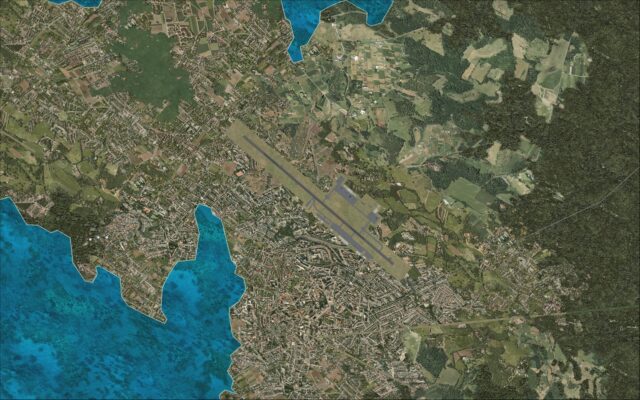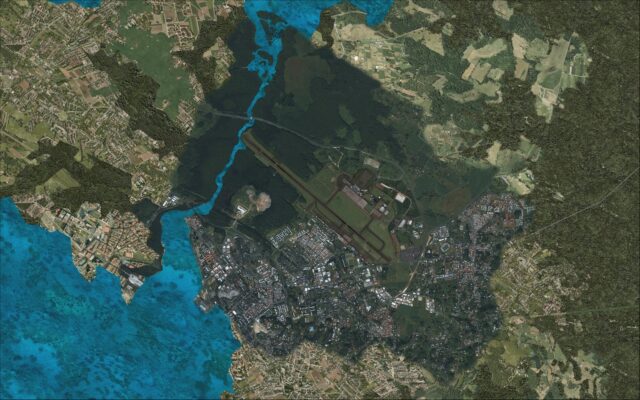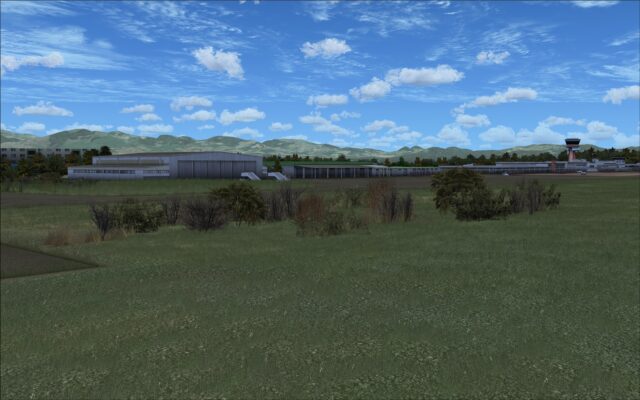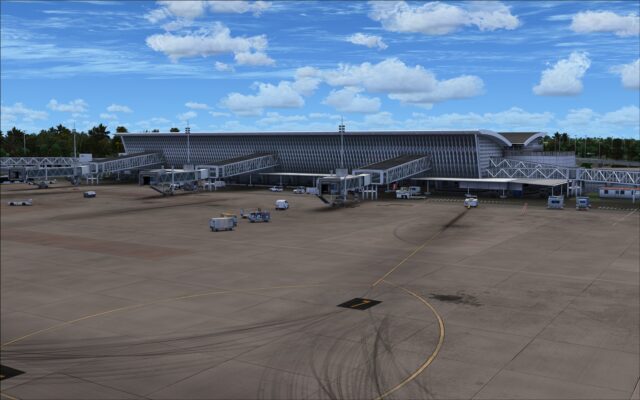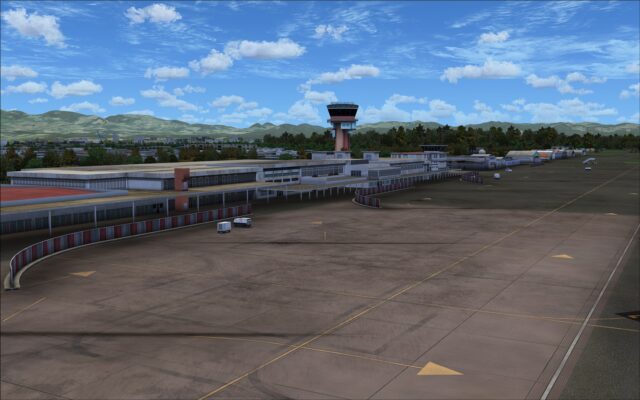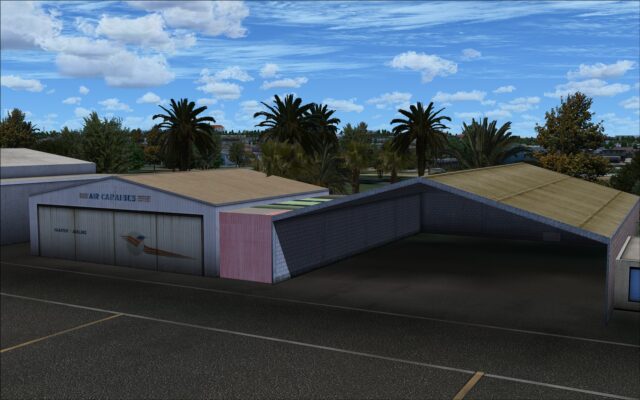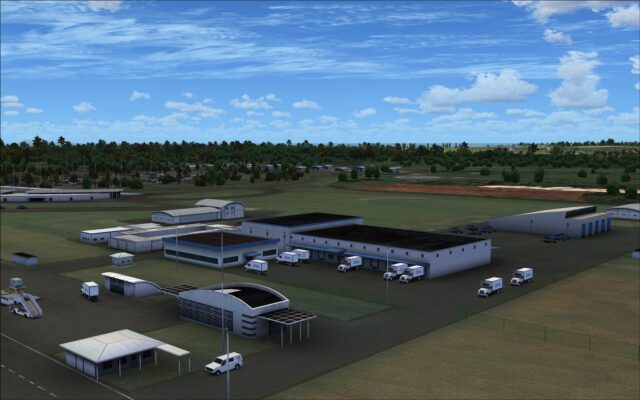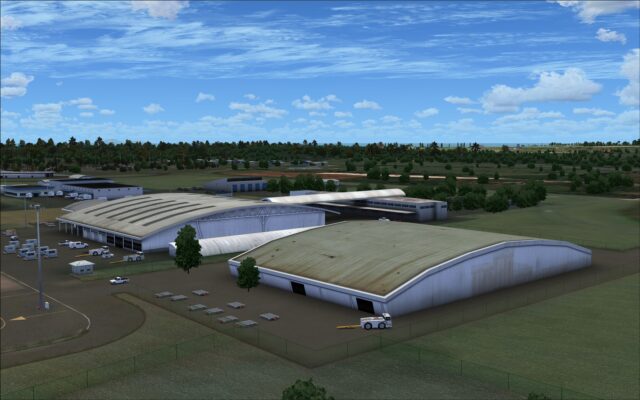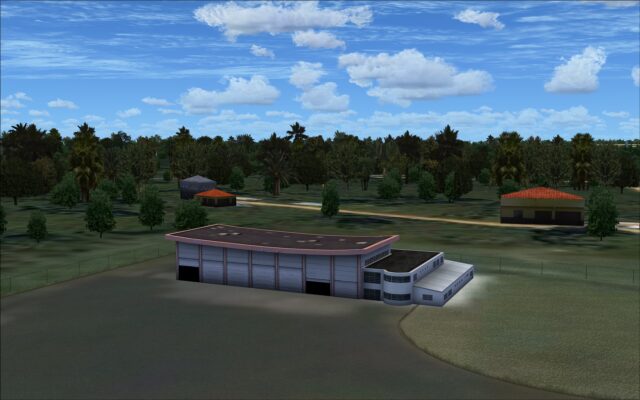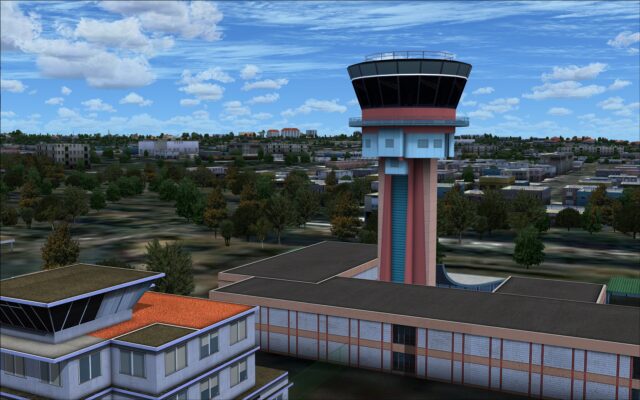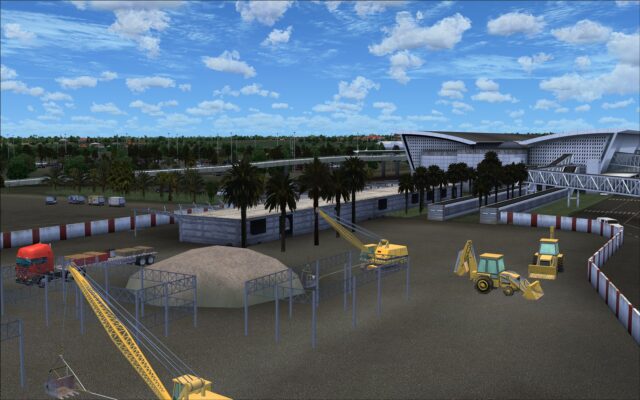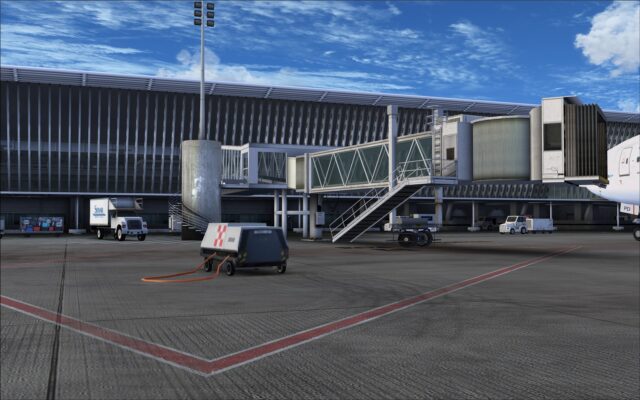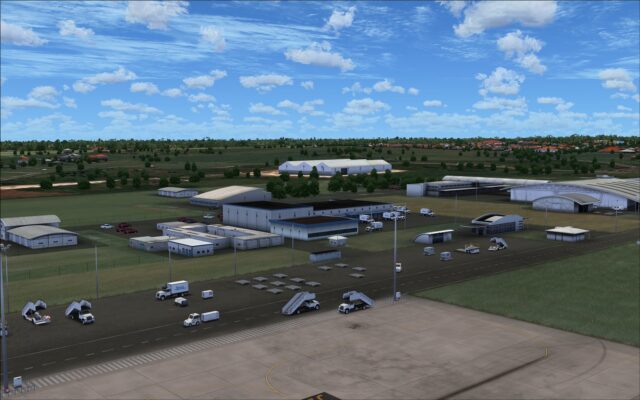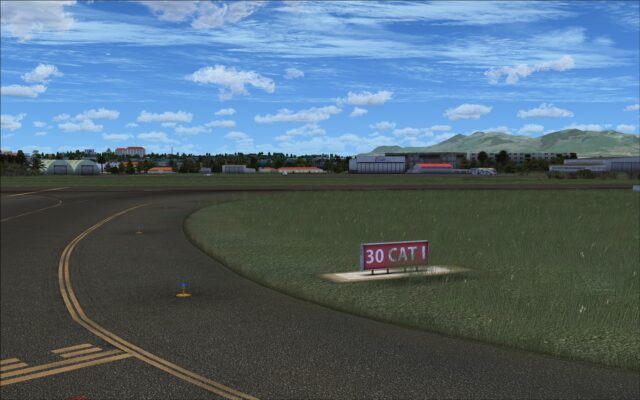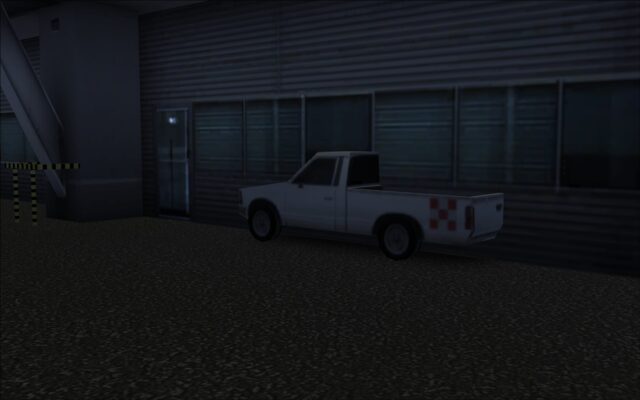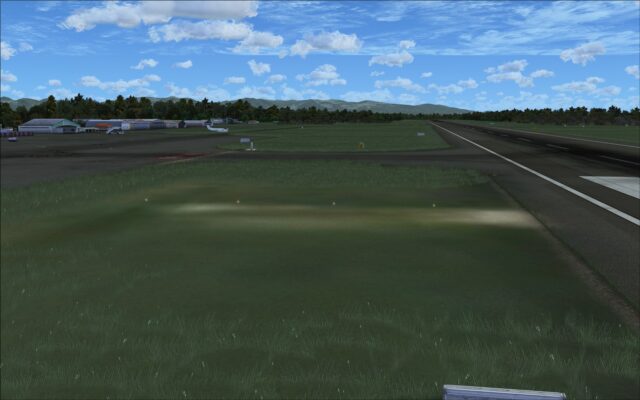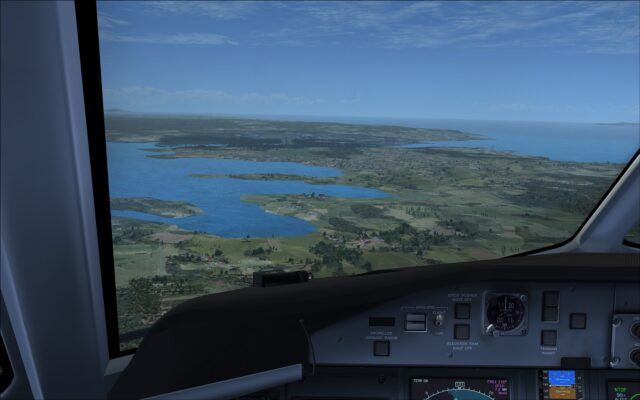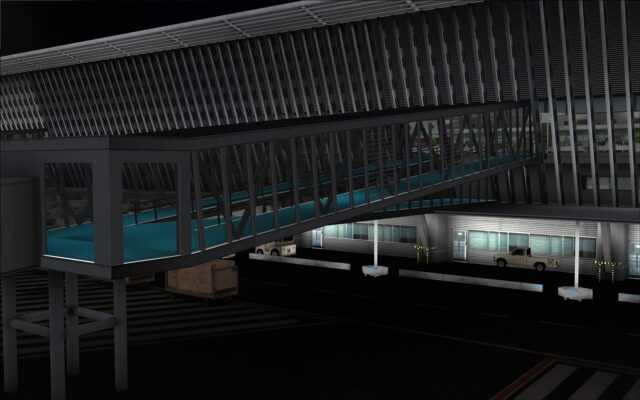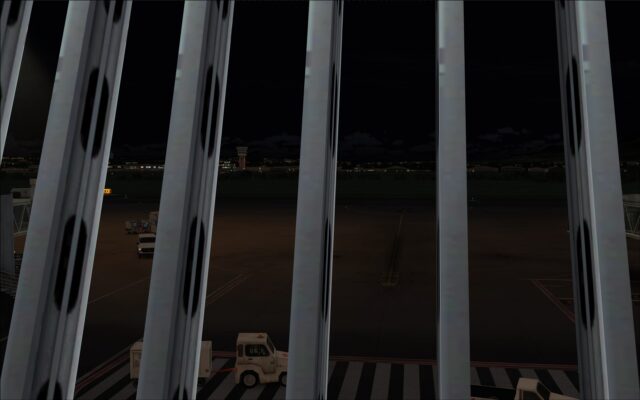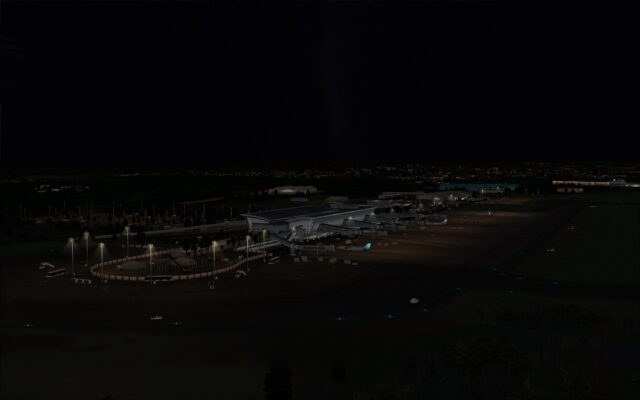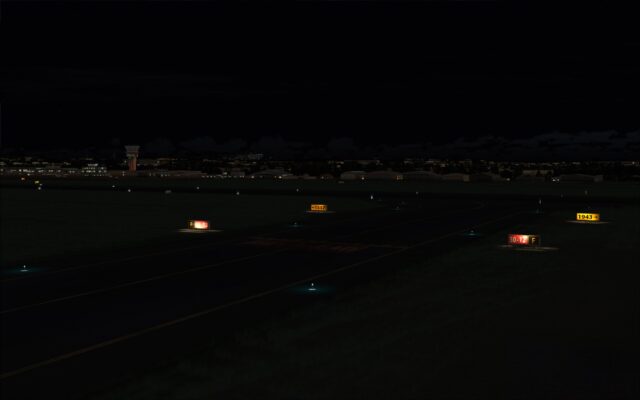
Pointe-à-Pitre International Airport or Pointe-à-Pitre Le Raizet Airport, ICAO: TFFR) is an airport serving Pointe-à-Pitre on the island of Grande-Terre in Guadeloupe. The airport serves as the main hub for both Air Caraïbes and Air Antilles Express. In 2008, the airport handled between 2 and 2.5 million passengers. The airport has one runway 12/30 @11,483ft which is long enough for the A380 to take off and land without difficulty. In fact, the first A380 prototype visited the airport during the 2nd week of January in 2006.
The review is of the FSX version of this scenery release.
Installation
Installation is simple but requires an active internet connection. The installer will begin by asking you which simulator you are using; FSX, P3D or P3Dv2. It will then want you to input your email address and registration code provided at the time of purchase, this information is necessary to create your personalized authorization code. With this code entered the process will continue through to completion. The entire procedure is straightforward and easy to follow. The final step adds the airport to the FSX scenery library.
Available from SimMarket’s product purchase page is an online tutorial that takes you through each screen of the installation process. I’ve included the link below. It is very well written and shows you exactly what you’ll need to do.
http://secure.simmarket.com/installation.html
Configuration
There are no configuration options available for this product.
Documentation
After the installation has been completed you will have access to two documents, one a pdf the other a word doc.
The pdf document is four pages and includes a description of the airport along with a map of the Caribbean so you can get an idea of where Guadeloupe fits in with the other Caribbean islands. They also list some of the products features and explain how the installation process works including how to add this airport to the FSX scenery library. The last page provides a link to the product forum and an email address for product support.
The word doc is barely two pages long and provides a short description of the airport along with a rudimentary listing of the scenery’s features. I thought that this document provided no value to the product.
Airport Scenery
The scenery’s main focus is of the airport however the coverage area extends beyond its boundaries to include the nearby town of Pointe-à-Pitre.
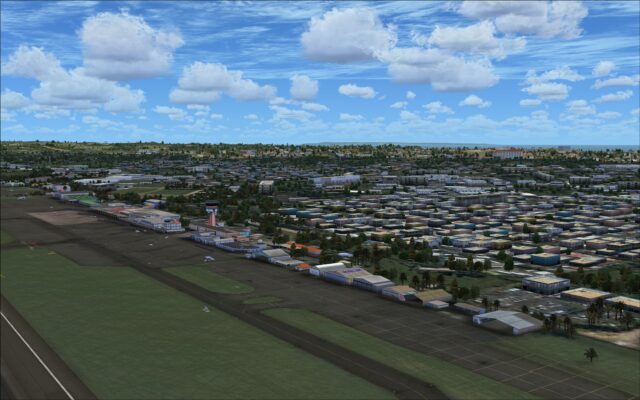
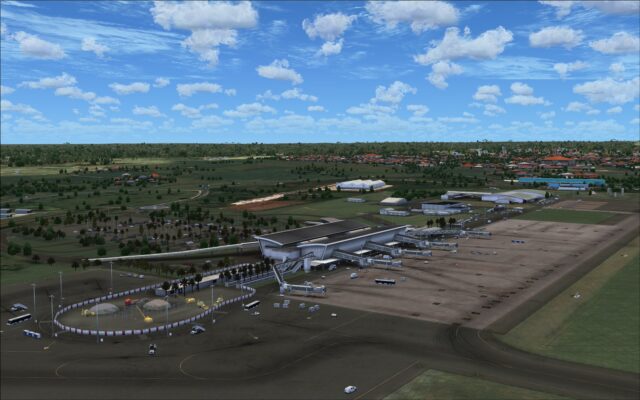 A geographical feature that is included as part of this airport addon is the Salt river which can be seen near the end of runway 12. If you look at the comparison screenshots you’ll see that the river does not exist in FSX.
A geographical feature that is included as part of this airport addon is the Salt river which can be seen near the end of runway 12. If you look at the comparison screenshots you’ll see that the river does not exist in FSX.
I felt that all of the ground textures were superb as they use photo ground textures throughout. Hard surfaces showed lots of details and included very realistic markings as well as wear and tear. Grassy areas were also very impressive and were further enhanced with volumetric vegetation. With regards to the vegetation I noticed that they also included a variety of small shrubs in addition to the usual grasses.
Several things immediately stood out when I began to look at the structures at Pointe-à-Pitre International Airport; first was the passenger terminal. They tend to be the largest and most interesting structure on the airport grounds, that was definitely the case here and the work they put into it certainly showcases their talents and modelling abilities.
While doing my research I found the terminal’s roof described as: “a gently curved inverted double slope that evokes the wings of a butterfly.” That is a very good description and the developers have captured those lines so that we too can definitely see that imagery when we look at it here in this scenery.
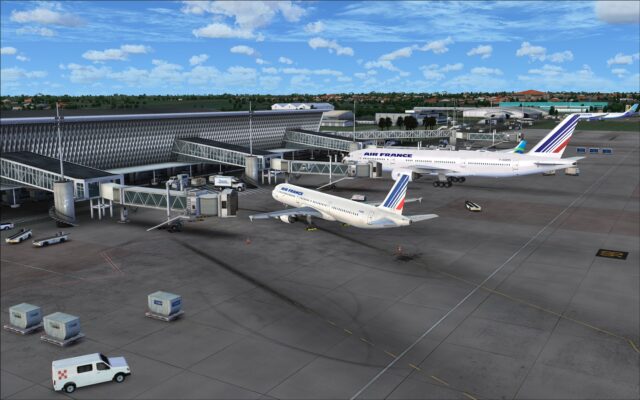
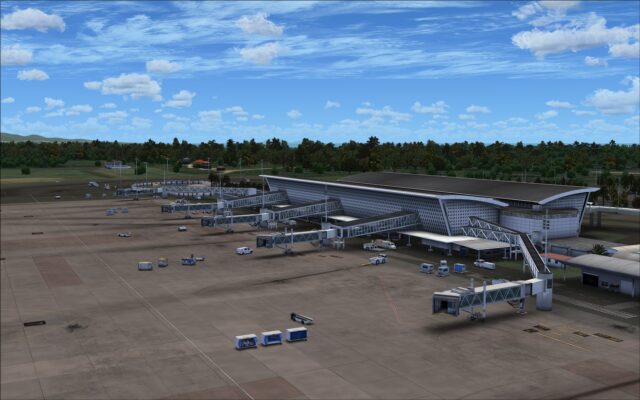
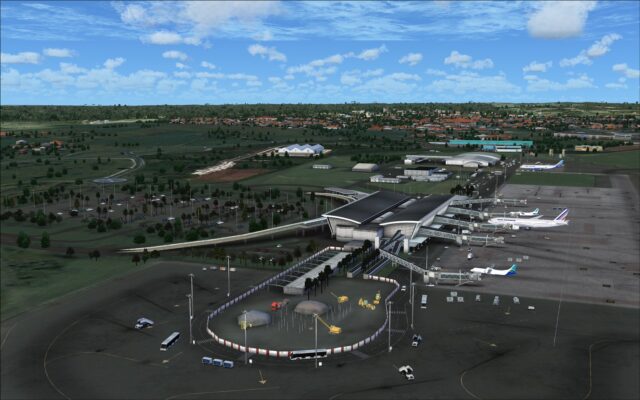 Close up is the best way to appreciate some of the physical features; the large walls are all glass with external vertical metal ribbing. Also, at the base and recessed along the entire length on the apron side are baggage conveyers which have been modelled. The imagery used shows off intricate door and lighting details.
Close up is the best way to appreciate some of the physical features; the large walls are all glass with external vertical metal ribbing. Also, at the base and recessed along the entire length on the apron side are baggage conveyers which have been modelled. The imagery used shows off intricate door and lighting details.
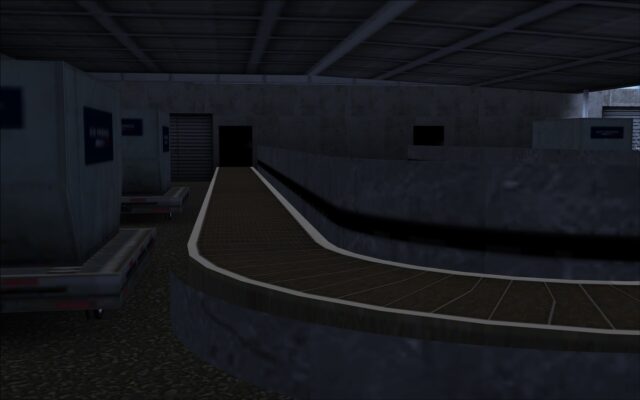
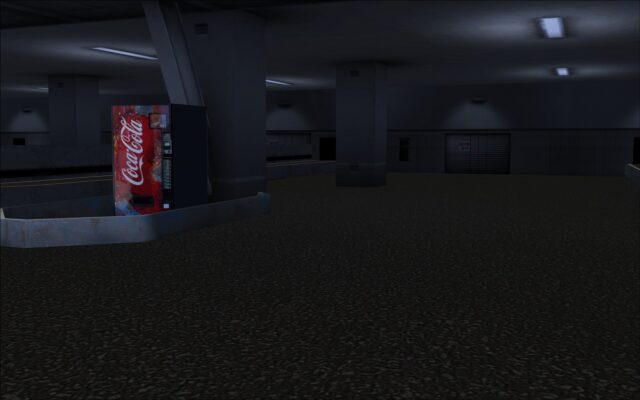 Jet ways are often an interesting feature and that is the case here. At TFFR they connect to the terminal via long glass enclosed passenger walkways. I was impressed with how they were done and especially the transparency. Each jet way also has a large thick concrete column. Normally they wouldn’t draw any attention but here they do, for several reasons. Along the outside of the column is a circular open metal staircase that includes individual stair treads and curved metal railings. Also there is no mistaking that these are concrete, you can see the imperfections in the material like you’d expect from weather, age and possibly from when the material was poured. Great textures!
Jet ways are often an interesting feature and that is the case here. At TFFR they connect to the terminal via long glass enclosed passenger walkways. I was impressed with how they were done and especially the transparency. Each jet way also has a large thick concrete column. Normally they wouldn’t draw any attention but here they do, for several reasons. Along the outside of the column is a circular open metal staircase that includes individual stair treads and curved metal railings. Also there is no mistaking that these are concrete, you can see the imperfections in the material like you’d expect from weather, age and possibly from when the material was poured. Great textures!
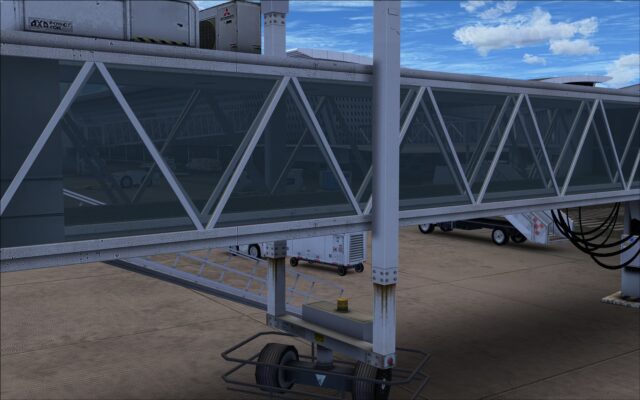
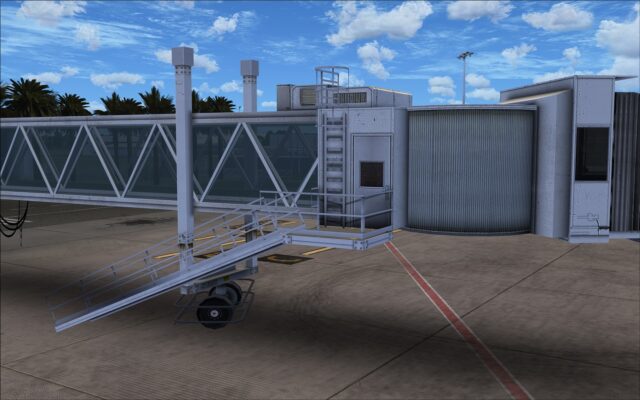
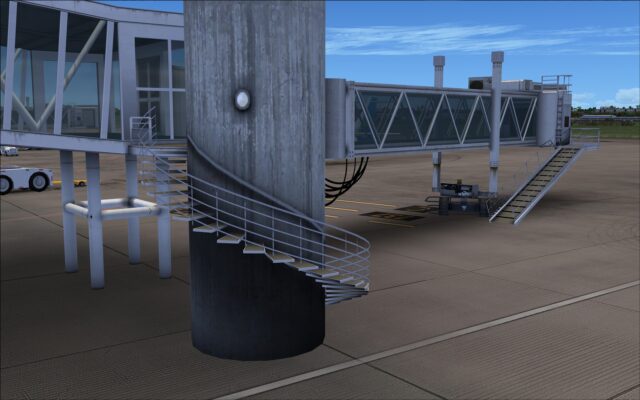 The terminal also includes partial modelling of its interior. Benches, storefronts and signage are included to give it a more realistic look. Here it works because the large glassed walls are transparent so we can enjoy this feature while parked at one of the terminal gates. I’ve included a screenshot of the interior as it appears at night bathed in the bright white glow of its lighting.
The terminal also includes partial modelling of its interior. Benches, storefronts and signage are included to give it a more realistic look. Here it works because the large glassed walls are transparent so we can enjoy this feature while parked at one of the terminal gates. I’ve included a screenshot of the interior as it appears at night bathed in the bright white glow of its lighting.
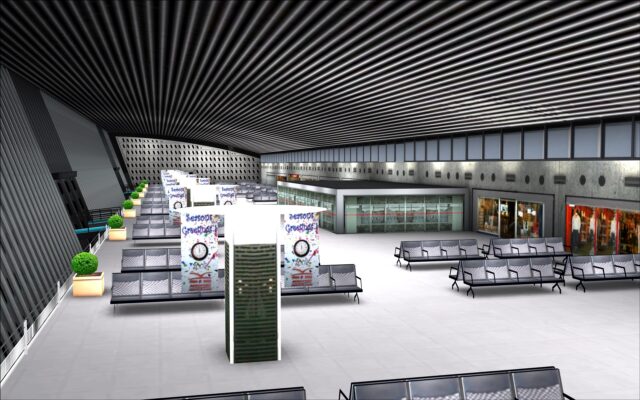 The arrivals side has been given the same level of attention but is far less complex than the apron side with its jet ways. It does include the elevated roadway plus static vehicles and concrete security barriers.
The arrivals side has been given the same level of attention but is far less complex than the apron side with its jet ways. It does include the elevated roadway plus static vehicles and concrete security barriers.
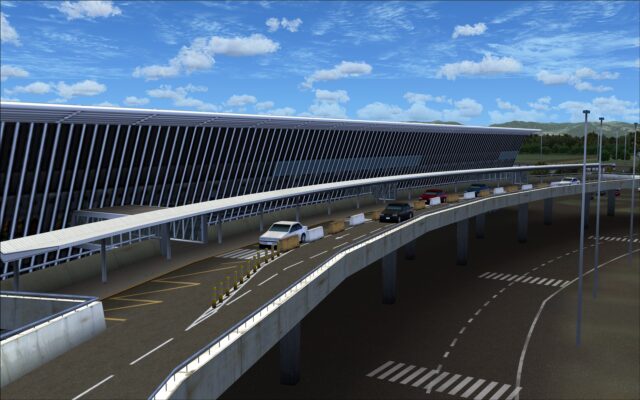 Moving away from the passenger terminal most of the buildings here are rather non-descript and plain. There was also little information on specific functions for many of the structures so unfortunately I had to surmise based on what I saw. There is a control tower, fire station, a variety of hangars and some other structures that I suspect are cargo and service related. Design wise most of them are both simple and similar in design. It was the quality of their work that ensured that they all didn’t look the same.
Moving away from the passenger terminal most of the buildings here are rather non-descript and plain. There was also little information on specific functions for many of the structures so unfortunately I had to surmise based on what I saw. There is a control tower, fire station, a variety of hangars and some other structures that I suspect are cargo and service related. Design wise most of them are both simple and similar in design. It was the quality of their work that ensured that they all didn’t look the same.
Realism requires subtleties in colouring and shading along with the inclusion of details both in the imagery and by adding extra 3d details. With the exception of the 3d details, which weren’t as abundant as I would have liked, all of these qualities could be seen throughout. Aging, weathering and the differences in building materials could be discerned again because of the quality of the product.
I’ve included some screenshots that show off some of their fine work in this regard.
The quality, variety and placement of the objects/vehicles in the scenery was very well done. I really got a sense of “being there” as I sat in the cockpit of my aircraft. From above or on the ground I got the impression that things were happening. Aprons are where most of the visible activity takes place and these areas looked busy. They appeared to be well prepared for handling the daily influx of aircraft traffic. Of course looking around at other parts of the airport other objects such as blast fencing, runway/taxiway markers, lighting etc are included. There is some construction taking place at the end of the main terminal building and they’ve included some construction vehicles.
It is difficult to create a complex addon and get everything correct. At TFFR I noticed a few instances where vehicles were partially embedded in the wall of the terminal building. Fortunately they aren’t really noticeable unless you happen to be snooping around the partially hidden nooks and crannies. That’s the only way these particular problems came to my attention so other than mentioning them here they really didn’t distract from the high quality visuals of the product.
I’ve noticed a trend having reviewed several recent Taxi2Gate airport releases. The beams of light for the PAPI lights are visible to help guide you to the touchdown zone but they neglect to include any actual fixtures. Not sure why but I think they should look into adding them.
Vehicular traffic was the main animation with service vehicles moving around on the airport’s service roads. TFFR is not a very busy airport so adding this type of traffic was a great way for the developers to make the airport look busy.
They’ve included moving jet ways which can be activated by pressing <Crtl J>.
Surrounding Area
To make your departures and arrivals seem a bit more realistic they’ve modelled some of the nearby town of Pointe-à-Pitre, more specifically areas east and south of the airport’s runway.
They use the same photo imagery textures that are seen within the airport’s perimeter and have populated them with various structures and vegetation.
I thought that the night time rendition of the scenery was very good. They include all of the typical night time lighting you expect to see such as overhead apron lighting, taxiway/runway/approach ground lighting and also interior and exterior building lighting. All of them were very good.
They also included a few enhancements that helped make the experience seem even more convincing. The illumination of the ground near the runway/taxiway lights and signage and the way that the apron overhead lighting appeared to penetrate the damp night time air and finally the transparent passenger walkway floor lighting. These effects add a great deal to the realism especially when you get to experience them up close such as when you are on the ground taxiing or at an aircraft parking stand.
Taxi2Gate, I believe, have propelled themselves into the group of elite airport addon developers for FSX. This latest product along with other recent releases such as LTBA Istanbul and KMCO Orlando prove that they are a force to be reckoned with. For anyone wanting a detailed mid-sized Caribbean island airport at a very reasonable price Pointe-à-Pitre International Airport definitely deserves your attention.
My Ratings
Installer: Very good. Simple to use.
Documentation: Good. Minimal information.
Modelling: Very good.
Extras: Animated apron traffic and moveable jet ways.
Download Size: 135Mb
Price: 16.99 EUR without VAT
Developer Homepage: http://www.taxi2gate.com
Link: http://secure.simmarket.com/taxi2gate-pointe_pitre-le-raizet-airport-tffr-fsxp3dv1p3dv2.phtml
Test System:
Intel i7 960 OC @ 4.2 Ghz, 6 Gb RAM, Gigabyte GTX780 w3Gb video, Win 7 Ultimate 64, FSX w/acceleration, DX9, UT2, REX Overdrive, GEXn, UTX, AES, GSX, FSUIPC.
Richard Desjardins


